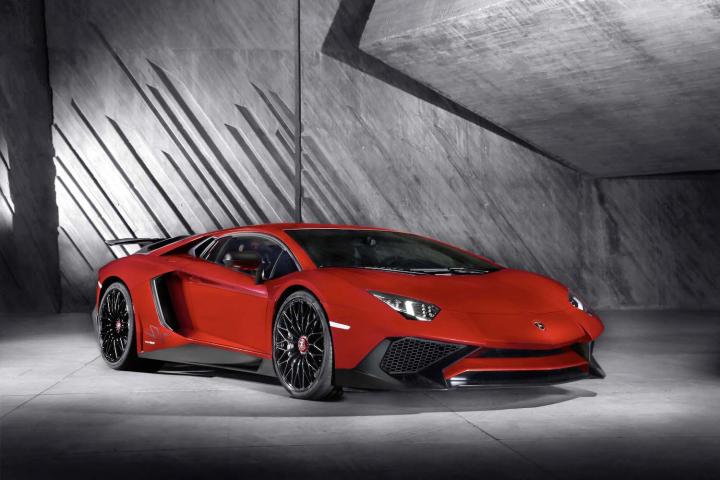
“The new Aventador Superveloce continues the Lamborghini tradition of SV models, pushing the boundaries in terms of performance and pure driving emotion,” says Stephan Winkelmann, President and CEO of Automobili Lamborghini, which sounds like a humble statement when taking a look at what the Aventador Superveloce promises.
First and foremost, the Aventador SV looks extremely sharp, both figuratively and literally. Aerodynamics throughout the bodywork have been made 150 percent more efficient, giving the SV 170 % more downforce than the standard Aventador. A big part of this is the prominent rear wing that can be manually adjusted to three different positions depending on what the driver is looking to achieve, either max downforce for cornering, or high straight-line speed.

The completely redesigned front end is opened up more, redirecting air through the new wider breathing cavity with two front wings: one central body color, and the other, a black lower lip.
Around back, a more airflow-focused octagonal grill is in place where regular body panels would be, allowing for greater heat dissipation. Those not replaced have been reshaped in the Lambo’s aerodynamic optimization. A large diffuser sticks out from the underbody, flanking the four-barrel exhaust pipes protruding from the center.

Getting into the heart of things, the longitudinal mid-mounted V12 engine gets an increase in power, giving the 6.5-liter naturally aspirated V12 engine a power output of 750 horsepower, up from 690 hp in the standard version. Max torque is 508 pound-feet going through to all four wheels by way of a seven-speed ISR (Independent Shifting Rod) gearbox, which can shift a gear in 50 milliseconds, all done with a single clutch, thanks to shifting rods doing the grunt work.
This, plus a shedding of about 110 lbs, results in an Aventador that can sprint from 0 to 62 in 2.8 seconds. That’s the same acceleration as the Aventador’s limited edition cousin, the mostly carbon-fiber Klingon battleship Lamborghini Veneno. Those brave enough can take the SV to a top speed higher than 217 mph.

Keeping it all in check is Lambo’s pushrod suspension system that packs the tongue-twisty Magneto Rheological Suspension system to firm up dampening at a moments notice. A new electromechanical dynamic steering system variable adapts the steering ration to the road speed and selected driving mode, allowing full, tight control while on the move. Coming to a stop will be the duty of standard carbon ceramic brakes. The SV rolls with 20-inch lightweight forged rims in the front and 21-inch wheels in the back, equipped with central locking mounts and shod in Pirelli P-Zero Corsa sport tires.
Climbing into the cockpit reveals the Aventador’s now visible carbon fiber monocoque, with matching sports seats upholstered in alcantara. The new TFT screen has much more of a yellow-dominated color scheme, with a light blue RPM shift indicator as well as a G-force meter.
The Lamborghini Aventador Superveloce will go on sale later this spring, with an asking price of €327,190 before the value added tax. The launch color, Rosso Bia will be available alongside five additional, yet unspecified colors at launch.


